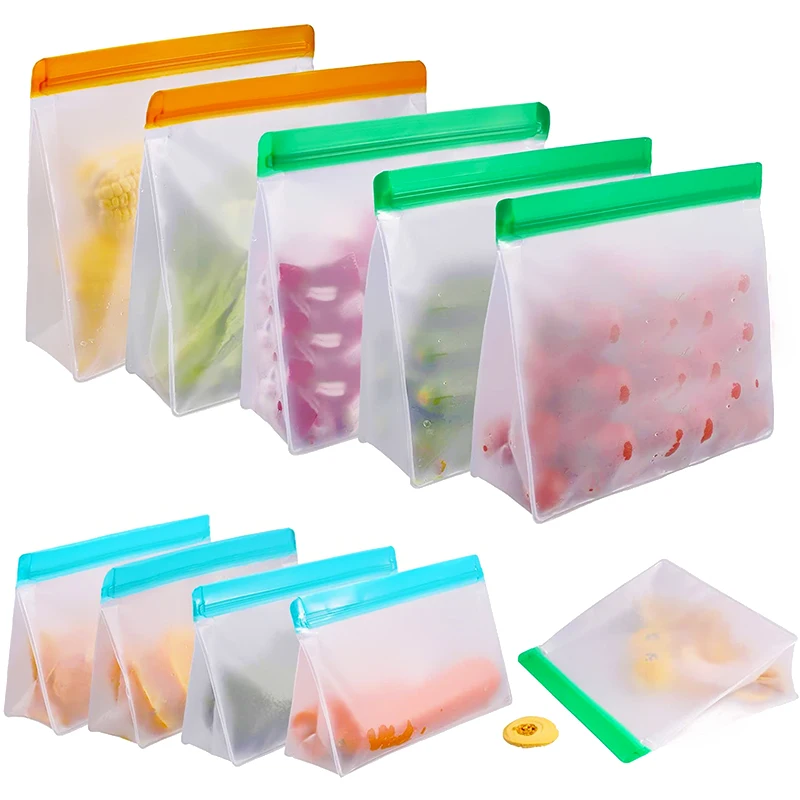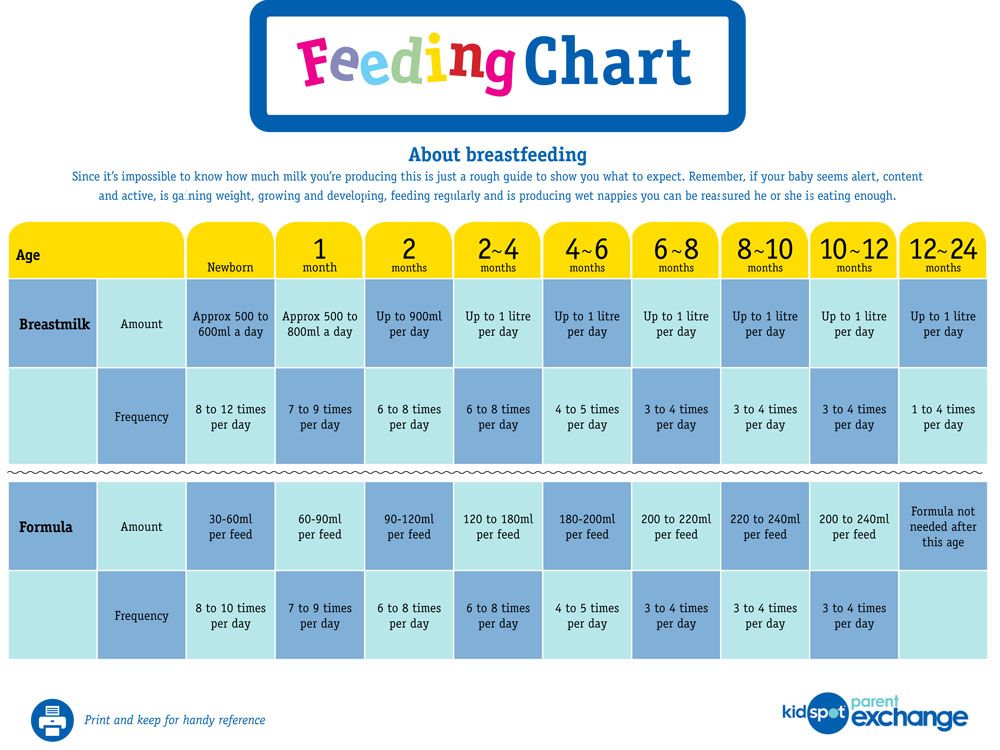Baby's feeding guide
How Often and How Much Should Your Baby Eat?
By: Sanjeev Jain, MD, FAAP
One of the most common questions new parents have is how often their baby should eat. The best answer is surprisingly simple: in general, babies should be fed whenever they seem hungry.
How do I know when my baby is hungry?
For babies born
prematurely or with certain medical conditions, scheduled feedings advised by your pediatrician are best. But for most healthy, full-term infants, parents can look to their baby rather than the clock for hunger cues. This is called feeding on demand, or
responsive feeding.
Hunger cues
A hungry baby often will cry. But it's best to watch for hunger cues before the baby starts crying, which is a late sign of hunger and can make it hard for them to settle down and eat.
Some other typical hunger cues in babies:
Licking lips
Sticking tongue out
Rooting (moving jaw and mouth or head in search of breast)
Putting his/her hand to mouth repeatedly
Opening her mouth
Fussiness
Sucking on everything around
It is important to realize, however, that every time your baby cries or sucks it is not necessarily because he or she is hungry. Babies suck not only for hunger, but also for comfort; it can be hard at first for parents to tell the difference. Sometimes, your baby just needs to be cuddled or changed.
General guidelines for baby feeding
It is important to remember all babies are different―some like to snack more often, and others drink more at one time and go longer between feedings. However, most babies will drink more and go longer between feedings as they get bigger and their tummies can hold more milk:
Most newborns eat every 2 to 3 hours, or 8 to 12 times every 24 hours. Babies might only take in half ounce per feeding for the first day or two of life, but after that will usually drink 1 to 2 ounces at each feeding. This amount increases to 2 to 3 ounces by 2 weeks of age.
At about 2 months of age, babies usually take 4 to 5 ounces per feeding every 3 to 4 hours.
At 4 months, babies usually take 4 to 6 ounces per feeding.
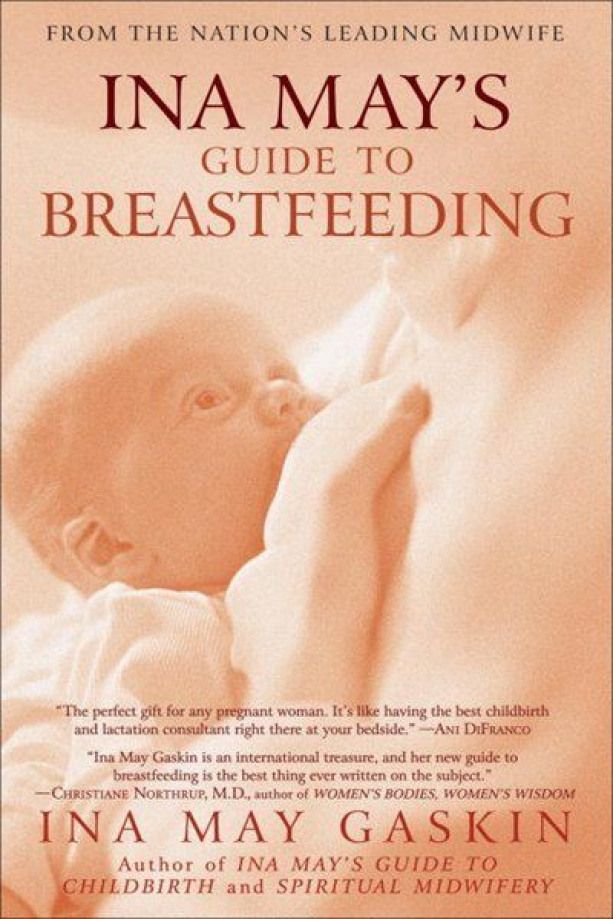
At 6 months, babies may be taking up to 8 ounces every 4 to 5 hours.
Most babies will increase the amount of formula they drink by an average of 1 ounce each month before leveling off at about 7 to 8 ounces per feeding. Solid foods should be started at about 6 months old.
Concerns about overfeeding or underfeeding your baby
Too full?
Babies are usually pretty good at eating the right amount, but they can sometimes take in more than they need. Infants who are bottle feeding may be more likely to overfeed, because drinking from a bottle may take less effort than breastfeeding.
Overfed babies can have stomach pains, gas, spit up or vomit and be at higher risk for obesity later in life. It's better to offer less, since you can always give more if your baby wants it. This also gives babies time to realize when they're full.
If you are concerned your baby wants to eat
all the time―even when he or she is full―talk with your pediatrician. Pacifiers may be used after feeding to help sooth healthy-weight babies who like to suck for comfort, rather than nutrition. For babies who are breastfed, it's best to wait to offer pacifiers until around 3 to 4 weeks of age, when breastfeeding is well-established.
Pacifiers may be used after feeding to help sooth healthy-weight babies who like to suck for comfort, rather than nutrition. For babies who are breastfed, it's best to wait to offer pacifiers until around 3 to 4 weeks of age, when breastfeeding is well-established.
Trouble gaining weight?
Most babies will double their birth weight by 5 months of age and triple their birth weight by their first birthday. If your baby is having trouble gaining weight, don't wait too long between feeding―even if it means waking your baby. Be sure to talk with your pediatrician about how often and how much to feed your baby.
How do I know if my baby is getting enough to eat?
Daily diapers
A newborn's
diaper is a good indicator of whether he or she is getting enough to eat. In the first few days after birth, a baby should have 2 to 3 wet diapers each day. After the first 4 to 5 days, a baby should have at least 5 to 6 wet diapers a day. Stool frequency is more variable and depends whether your baby is
breastfed or formula fed.
Growth charts
During regular health check-ups, your pediatrician will check your baby's weight and plot it on a growth chart. Your baby's progress on the growth chart is one way to tell whether or not they are getting enough food. Babies who stay in healthy growth percentile ranges are probably getting a healthy amount of food during feedings.
Remember
Talk with your pediatrician if you have any questions or concerns about your baby getting the right amount to eat.
More information:
- Making Sure Your Baby is Getting Enough Milk
- Amount and Schedule of Formula Feedings
- Is Your Baby Hungry or Full? Responsive Feeding Explained (Video)
- Remedies for Spitty Babies
- Ask the Pediatrician: With the baby formula shortage, what should I do if I can't find any?
- Ask the Pediatrician: How should we feed our baby if we're running low on money?
-
Airplane Choo Choo: A Feeding Guide for Children (National Dairy Council)
About Dr.
 Jain:
Jain:
Sanjeev Jain, MD, FAAP, is a Clinical Associate Professor of General Pediatrics and Adolescent Medicine at the University of Wisconsin School of Medicine and Public Health. Within the American Academy of Pediatrics, he is a member of the Section on International Child Health and the Wisconsin State Chapter.
The information contained on this Web site should not be used as a substitute for the medical care and advice of your pediatrician. There may be variations in treatment that your pediatrician may recommend based on individual facts and circumstances.
Feeding Guide for the First Year
Feeding Guide for the First Year | Johns Hopkins MedicineReviewed By:
Tiffani Hays, M.S., R.D., L.N., Director of the Pediatric Clinical Nutrition Education & Practice
Making appropriate food choices for your baby during the first year of life is very important. More growth occurs during the first year than at any other time. It’s important to feed your baby a variety of healthy foods at the proper time. Starting good eating habits at this early stage will help set healthy eating patterns for life.
More growth occurs during the first year than at any other time. It’s important to feed your baby a variety of healthy foods at the proper time. Starting good eating habits at this early stage will help set healthy eating patterns for life.
Recommended Feeding Guide for the First Year
Breast milk and formula are designed to be the primary sources of nutrition throughout an infant’s first year of life. You should talk with your baby’s health care provider before starting solid foods. Solid foods should not begin before age 4 months because:
- Breast milk or formula provide your baby with all the nutrients that are needed.
- Your baby isn’t physically developed enough to eat solid food from a spoon.
- Feeding your baby solid food too early may result in poor feeding experiences and increased weight gain in both infancy and early childhood.
The American Academy of Pediatrics (AAP) recommends that all infants, children and adolescents take in enough vitamin D through supplements, formula or cow’s milk to prevent complications from deficiency of this vitamin. In November 2008, the AAP updated its recommendations for daily intake of vitamin D for infants, children, and adolescents who are healthy. It is now recommended that the minimum intake of vitamin D for these groups should be 400 IU per day, beginning soon after birth. Your baby’s health care provider can recommend the proper type and amount of vitamin D supplement.
In November 2008, the AAP updated its recommendations for daily intake of vitamin D for infants, children, and adolescents who are healthy. It is now recommended that the minimum intake of vitamin D for these groups should be 400 IU per day, beginning soon after birth. Your baby’s health care provider can recommend the proper type and amount of vitamin D supplement.
Guide for Breast-feeding (Zero to 12 Months)
- In the early days after a baby’s birth, the mother should plan to breast-feed every two to three hours, including overnight. The mother should respond to the infant’s cues of hunger in a prompt and relaxed manner, providing a quiet and comfortable environment for both herself and the baby. Frustrated or distracted infants may have difficulties latching on.
- It is normal for infants to wake up overnight to feed for the first several months. If you have any concerns about overnight feeding, please discuss them with your health care provider.

- Alternate breasts to feed on, and allow the infant to completely empty the breast before switching to the other. This practice ensures the infant receives hindmilk, which is richer in nutrients.
- Follow your child’s feeding cues and resist forcing a schedule. Instead, rely on keeping track of wet diapers and your child’s growth to judge whether he or she is receiving enough breast milk. A mother’s milk changes as the infant grows, and feeding habits change as well in order to best meet a child’s needs. If you have any questions about whether your child is receiving enough breast milk, ask your health care provider.
- When not able to breast-feed, use a breast pump to extract milk and maintain milk supply. Pumped breast milk should be stored safely, using appropriate temperature guidelines. Pumped breast milk may be offered to infants in bottles, while responding to the same feeding cues to determine how much they take.
 Forcing bottles to be emptied may result in overfeeding and excess weight gain, even when feeding breast milk.
Forcing bottles to be emptied may result in overfeeding and excess weight gain, even when feeding breast milk. - With the proper support, a mother can meet the needs of most infants, even twins, so seek out help from your health care provider or lactation consultant for success.
Guide for Formula Feeding (Zero to 12 Months)
- When breast milk is not available, standard infant formula is an appropriate alternative for most healthy full term infants, but there are some differences between brands. Do not hesitate to ask your health care provider for a recommendation if you are unsure which formula to use.
- Bottle-feeding should be interactive, with the caregiver holding both the bottle and the infant. Propping a bottle has been linked to an increased risk of ear infections and tooth decay.
- Formula feeding should be in response to the infant’s needs and not based on a predetermined schedule.
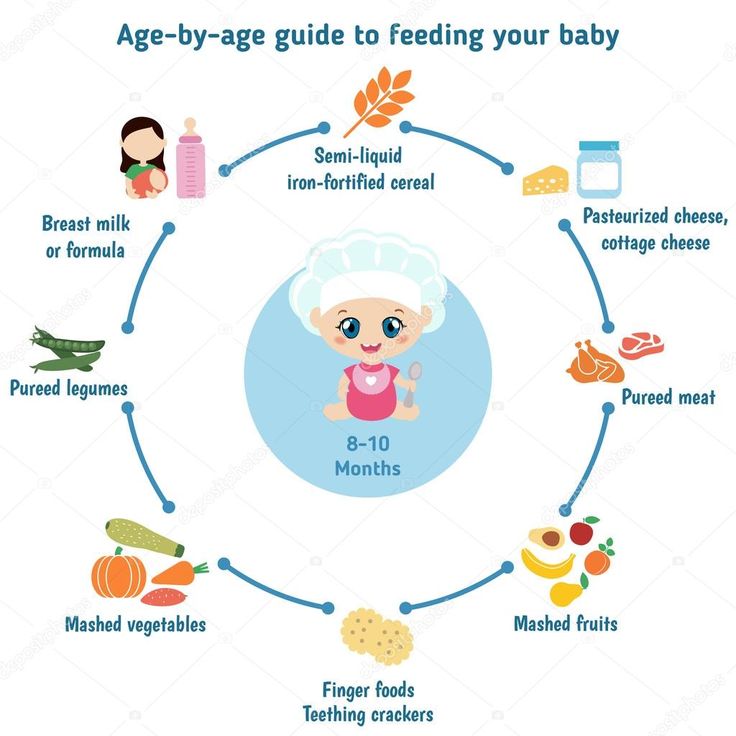 Look for cues of hunger and fullness to determine both when to feed and how much. The number of wet diapers per day and your child’s growth will reflect if he or she is getting enough formula. The chart below demonstrates common intakes for infants at various stages. However, ask your health care provider if you have any questions about how much formula your infant is taking.
Look for cues of hunger and fullness to determine both when to feed and how much. The number of wet diapers per day and your child’s growth will reflect if he or she is getting enough formula. The chart below demonstrates common intakes for infants at various stages. However, ask your health care provider if you have any questions about how much formula your infant is taking. - The amount of formula an infant takes will decrease as the baby increases intake of solid foods, but formula remains a significant source of calories, protein, calcium and vitamin D for the first year of life.
- Ask your health care provider before switching an infant less than 1 year of age from formula to cow’s milk or a cow’s milk alternative.
| Age | Amount of formula per feeding | Number of feedings per 24 hours |
|---|---|---|
| 1 month | 2 to 4 ounces | six to eight |
| 2 months | 5 to 6 ounces | five to six |
| 3 to 5 months | 6 to 7 ounces | five to six |
Complementary Feedings (After 6 Months of Age)
Beverages
- Offer only breast milk or formula in bottles until 1 year of age unless specifically advised by your health care provider.

- Begin offering breast milk and/or formula in a cup starting at 6 months of age. Infants should drink breast milk and/or formula for the first year of life.
- Fruit juice is not recommended under 1 year of age.
- When introducing juice, offer 100% pasteurized juice and limit it to 4–6 ounces per day. Do NOT place juice in a bottle.
- Avoid giving any sugar-sweetened beverages to infants.
Solid Foods
- Introduce solid foods when your infant is ready, at around 6 months of age depending on the infant’s development. Infants are ready to start eating solid foods when they can:
- sit up on their own or with a little support
- reach for and put things in their mouth
- open their mouth when seeing something coming
- keep food in their mouth rather than pushing it out onto the chin
- move food to the back of their mouth with their tongue
- turn their head away when they do not want something
- Prepare to introduce solid foods in a calm feeding environment where the infant is sitting upright and is appropriately supported and moderately hungry.

- Start with small amounts of solid food, feeding with a spoon or allowing finger feeding, then gradually increase the amount as the infant eats more and develops. Avoid offering breast milk or formula until after the solid-food experience has wound down.
- Expose infants to a wide variety of flavors and textures of healthy food. Don’t limit your baby’s food choices to the ones you like. Offering a range of foods early will pave the way for healthy eating habits.
- Maintain the division of responsibility when feeding.
- The caregiver is responsible for what to eat (offering appropriate variety and textures).
- The child is responsible for deciding whether to eat and how much.
- Avoid adding salt or sugar to make baby foods more appealing. Many babies and toddlers need to experience a new food multiple times before accepting it, and increased intakes of salt and sugar among children are associated with obesity in adults.

- Observe infants for any signs of intolerance when introducing a new food or texture, and discuss all concerns with your health care provider.
- Although convenient and safe, commercial baby foods are not required. Young children are more likely to eat foods they see others eating, so as long as they are observed to see how they handle new food in their mouths, baby-led weaning using table foods is an appropriate way to introduce solids.
- Avoid honey in any form during your child’s first year, as it can cause infant botulism. Address any concerns about developing food allergies with your health care provider.
- Don’t restrict fat and cholesterol in the diets of very young children, unless advised by your child’s health care provider. Children need calories, fat and cholesterol for the development of their brains and nervous systems, and for general growth.
Updated on July 26, 2019.
Related
-
Nutrition
Toddler Nutrition
-
Breastfeeding Your Baby
Breastfeeding 101: Q&A with Lactation Expert Nadine Rosenblum
-
Developmental Milestones: Babies and Toddlers
Well-Care Visits
Related Topics
Basics of breastfeeding. Benefit for expectant mothers.
|
|
Breastfeeding for beginners | Philips Avent
Search Support IconSearch Keywords
Home ›› Breastfeeding for beginners
Home ›› Breastfeeding for Beginners
↑ Top
Some of the most common questions about newborns have to do with breastfeeding, which will take a long time during the first few months of a baby's life. In this article, we will discuss all of its main aspects, from the basic principles of breastfeeding to the best tips for effective newborn feeding.
As always, if you have any questions or concerns, seek the opinion of another expert.
Basic principles of breastfeeding
Although every baby is different, newborns usually eat every two to three hours, for a total of 8 to 12 times a day. In the first one or two days after birth, babies usually drink 25-50 ml of milk per feeding. This volume will gradually increase to 50-75 ml when the baby is about two weeks old.
More information on how much a newborn should eat can be found here.
How long does one feeding last?
Again, every baby is different, so there is no set time frame for every newborn. But in general, breastfeeding a newborn takes five minutes to one hour. This time depends on the size, age of the baby and the frequency and duration of feeding the newborn.
How to start breastfeeding?
In the first minutes of a child's life, the mother should put the baby on her chest and ensure body contact. This time is called the "golden hour": it is at this hour that a connection is established between mother and child and the newborn's natural instinct to seek the breast manifests itself. As soon as the child begins to show signs of hunger, you need to give him a breast.
Mothers who are just learning to breastfeed their newborns should remember that comfort is key. There is no better way to ensure breastfeeding success than by creating a comfortable and relaxing environment for the mother. For starters, mom can sit comfortably on the couch, on the bed, or in a chair with pillows to support her back while feeding. Breastfeeding moms can get creative with breastfeeding and choose specific lighting, soothing music, or anything else that helps them relax.
For starters, mom can sit comfortably on the couch, on the bed, or in a chair with pillows to support her back while feeding. Breastfeeding moms can get creative with breastfeeding and choose specific lighting, soothing music, or anything else that helps them relax.
Bring your baby to your breast, not the other way around. If you want to make breastfeeding a newborn easier, then do not lean towards the baby, but bring it to your chest. The baby's mouth should be against the nipple, the neck should be straight, and the shoulders and hips should be in line. Mom can also lightly touch her nipple to her baby's nose and mouth to encourage him to latch on.
Support your chest. While holding the newborn with one hand, the mother can place the other hand directly under the breast to support it. When learning to breastfeed, some mothers prefer to leave one hand free; in this case, a rolled towel can be used.
Breastfeeding can be done in different positions; experiment with them to find the most comfortable for you and your baby. We list the most common breastfeeding techniques below:
We list the most common breastfeeding techniques below:
- Cradle. In this position, the baby lies on the mother's hand from the side of the breast, which he sucks. The baby's head lies on the mother's elbow during feeding.
- Cross cradle. With a cross cradle, the mother holds the baby with the hand opposite to the mammary gland that the baby sucks. With the other hand, mom can support her breasts.
- Underhand or Football. In this position, the mother holds the child next to her, putting her back on her arm. With the other hand, she supports the baby's head, facing the mammary gland, with which she feeds the baby.
- Lying on the side. In this position, the mother lies on her side, and the child lies next to her, facing her chest. Mom can support the child under the back with the hand that is on top, or put a folded towel under the back of the child.
Newborn Breastfeeding Tips
After looking at breastfeeding techniques, here are some tips for new mothers:
A good grip is important for both mother and baby. With a good grip, the baby will suck out milk correctly, and the mother's nipples will not hurt. To achieve a good latch, the mother needs to find a position that makes it easier for the newborn to latch onto the breast, and to do this, she should experiment with different positions. If a mother is having difficulty feeding, she should contact a lactation consultant.
With a good grip, the baby will suck out milk correctly, and the mother's nipples will not hurt. To achieve a good latch, the mother needs to find a position that makes it easier for the newborn to latch onto the breast, and to do this, she should experiment with different positions. If a mother is having difficulty feeding, she should contact a lactation consultant.
2. Maintain milk supply. Sometimes a nursing mother cannot be constantly with her child during feedings. In such cases, it is very important to maintain milk production. An excellent solution for maintaining milk production when mother and baby are not together is pumping milk.
Take a look at this double breast pump: it reduces pumping time and features a massage petal attachment to gently stimulate milk flow.
3. Breastfeeding everywhere. One of the many benefits of breast milk is that mom always has it with her. But some moms feel awkward at first when they have to breastfeed their baby in public. For such mothers, we recommend that you first practice breastfeeding your newborn in front of a mirror and choose clothes that allow you to cover your breasts during feeding. A shawl or scarf can help with this - with them, the mother will feel more comfortable when feeding the baby outside the home.
For such mothers, we recommend that you first practice breastfeeding your newborn in front of a mirror and choose clothes that allow you to cover your breasts during feeding. A shawl or scarf can help with this - with them, the mother will feel more comfortable when feeding the baby outside the home.
And to keep clothes dry and clean while breastfeeding, we recommend that mums use these disposable bra pads with a porous and breathable structure: they do not leak and allow air to pass through.
Be prepared for difficulties. It is important for moms not to panic or get upset when faced with a common breastfeeding problem, such as insufficient milk production, breast engorgement, clogged milk ducts, mastitis, or sore nipples. To feel calm and confident during all stages of breastfeeding a baby, mothers need a circle of support: family members, friends, and healthcare professionals. The main thing is to stay calm, but if a mother is concerned about any aspect of breast health, she should definitely see a doctor.

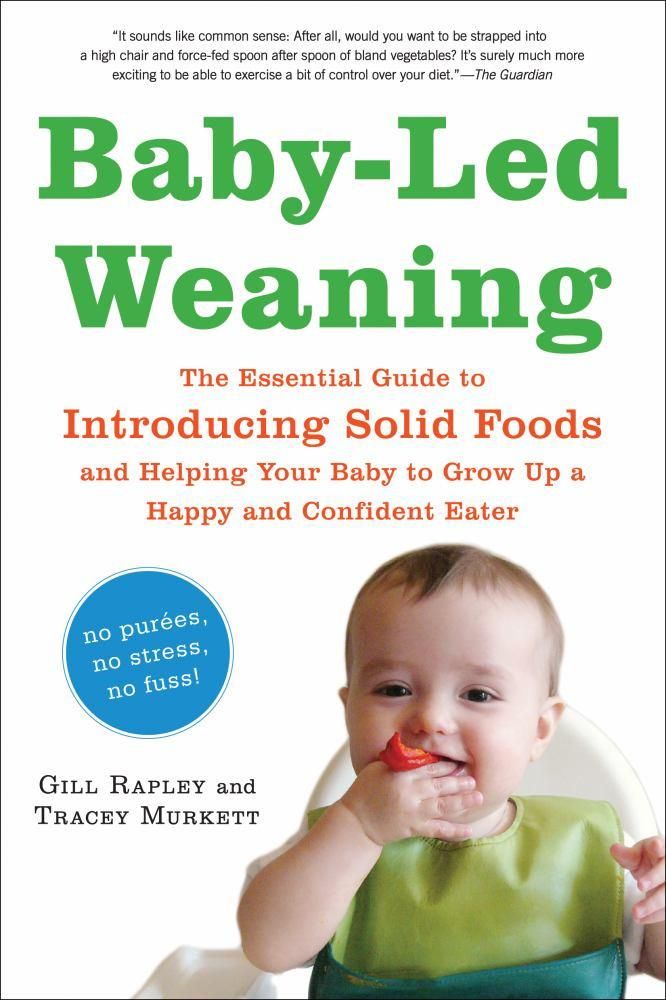
 Thanks to the well-coordinated and efficient work of the entire team, it is possible to carry out an uninterrupted cycle of transfusion care for obstetric, gynecological patients and children.
Thanks to the well-coordinated and efficient work of the entire team, it is possible to carry out an uninterrupted cycle of transfusion care for obstetric, gynecological patients and children. 


